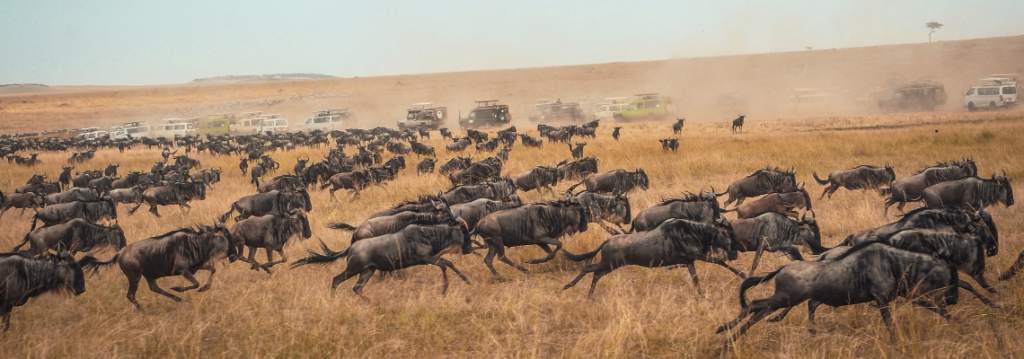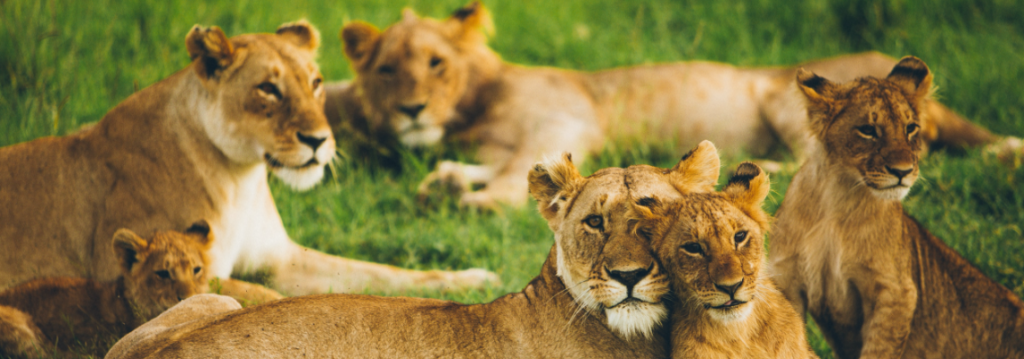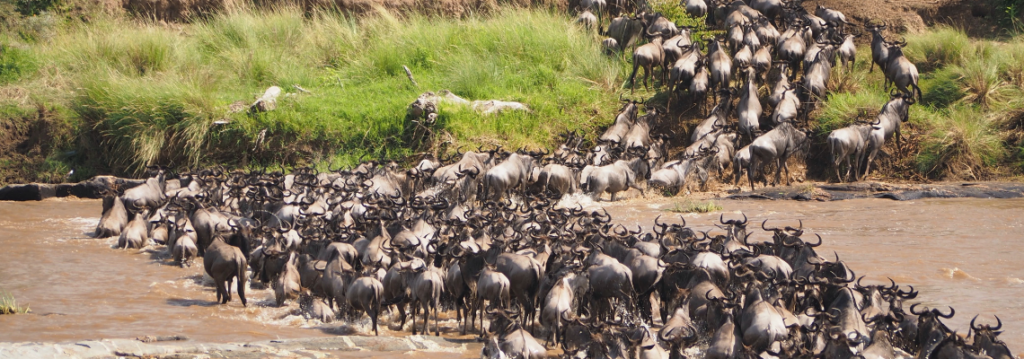Category: Blog
The Danakil Depression in Ethiopia could be a rare but fascinating remote destination. Visitors might feel as if they’d landed on a unique planet. The Danakil Depression is extremely hot and features bubbling volcanoes and a singular landscape.
The Danakil Depression is believed to be one of the foremost inhospitable places in the globe. It’s far and away from the most well-liked – with a mean daily temperature of over 34° Celsius (with peaks going overflow 50°), at about 125 meters below water level, the area has a minimal amount of rain per year.
The area where the Danakil is found sits on three tectonic plates, which are constantly shifting. As a result, the Danakil is scattered with rock formations, springs and geysers. you’d expect that such an inhospitable place is totally desert. Alas, it is not.
Those inquisitive about visiting the Danakil Depression are advised to rent a tour, especially considering that it’s a somewhat hostile environment. it’s best to go to with an expert and someone who knows the world well.
What is shocking is that the indisputable fact that there actually is life during this region. this can be where the famous Lucy, a hominid skeleton, was found. And it’s where the Afar people, one among the numerous indigenous peoples of Ethiopia, live.
These are nomadic those who still live a reasonably traditional lifestyle of cattle or goat herding. Some add the salt mines scattered around the Dallol.
Danakil Depression Overview:
When you arrive at the Danakil Depression, the most important things that are must-see are as follows:
Dallol:
20 km north from Hamedela, Dallol maybe a cinder cone volcano. There are hot springs here discharge brine and acidic liquid. Visitors will see small, temporary geysers that produce cones of salt. the bottom of the hills is that the lowest place in Ethiopia furthermore because the hottest place on earth.
The Dallol comes from the people of Afar and means dissolution or disintegration. In fact, the Afar people hack blocks of salt out of the bottom during this area. Travelers are likely to determine camel caravans loading up with salt here.
Irta’ale Volcano:
Irta’ale, also referred to as Erta Ale, is a vigorous shield volcano. this suggests that the volcano consists almost exclusively of lava flows. Erta Ale has been in a very state of continuous eruption since 1967. The volcano’s southerly crater is one in every of the sole permanent lava lakes on the world. The road to the Volcano is 15 km and can take you 2-4 hours.
Tours take visitors on the hike within the evening, generally after dinner. While the climb in itself isn’t too steep, the darkness and warmth make it harder. it’s possible to ride a camel and tourists should have a torch to run. At the summit, the temperature is going to be cooler.
Lake Afdera:
Lake Adfera or Lake Afrera could be a hypersaline lake, with a surface of 100 square km. A hypersaline lake is one that has high concentrations of common salt or other salts, making saline levels on top of those within the ocean. The lake isn’t as visited as Dallol or Erta Ale. Visitors can actually swim within the nearby springs, and salt is extracted from its green waters.
Things to consider when you visit the Danakil Depression:
1. When to Visit:
The Danakil Depression is hot year-round. The place is very hot there is no way you can escape the heat but we advise you visit between November and January, during this time the temperature is at least on the place human can handle compared to other months, though it’s still very hot
2. Bring….
– a headlamp,
– a small backpack for the volcano trek,
– sunglasses and a hat,
– It’s a volcano area so it will be nice to bring something to cover your face/mouth.
– toilet paper and baby wipes,
– A small cloth for cleaning your hands
3. Drinks:
The place is extremely hot so dehydration is very important you will drink a lot of water so make sure you bring enough water during your safari
4. Electricity:
Only happens to be available when you are in Abaala Village & standby generator in Hamed Ela military camp but you have to pay a small fee to use it.
5. Be ready for:
A very high (over 40 degrees) temperatures non-stop for some days. Not sleeping on a standard bed for 3 nights and not sleeping much generally. The sleep at the volcano is merely 3-4 hours long and you sleep on a mattress placed on the bottom under the night sky. The night at the Abaala Village is spent on a mattress in an exceedingly shared room in an exceedingly local homestay and also the night in Hamed Ela camp is spent on an Afar bed ( a wooden platform with thick ropes tied between its sides and also the mattress placed on top of it).
It’s good to own a sleeping capsule with you after you sleep in Hamed Ela because the sleep is kind of long (over 8 hours) but the warmth, donkeys making noises and folks arousal early to arrange breakfast might keep you awake. – not having a standard shower and not employing a normal toilet for four days – there’s an African cold bucket shower and drop toilet in Abaala Village. In other places, you would like to use the ‘natural toilet’ as you go.
6. Water and Food:
Water and food are provided but are very basic and sometimes you can repeat the same food for days so bring extra food or snacks in case the food is not your favorite.
7. Be strong and be prepared:
For an unforgettable adventure and astonishing views!!!
If you have got never been to Africa, you’ll have heard shocking stories of African family safaris gone wrong. These stories could cause you to hesitant to plan a family safari in Kenya, but in Kenya, you ought to know maybe a prime and safe safari destination.
It was voted Africa’s leading Safari Destination of 2017 for the second year in an exceeding row, and it houses a number of the world’s most well-liked safari destinations. as an example, Masai Mara National Reserve has been voted Africa’s leading parkland for 3 years consecutively.
Diani Beach has been crowned Africa’s leading beach destination 4 times in an exceeding row since 2014, and also the Leopard Beach Resort & Spa in Mombasa was voted Africa’s leading family resort of 2017. With the solid facts provided, Talk to us about your Holidays in Kenya year-round.
You may be positively surprised by the results you may get.
1. Starting planning early:
Most geographic region safari lodges and camps are relatively small, with just a couple of villas or luxury tents that make their exclusive atmosphere. Kenya Accommodations that cater to families will typically only have one or (at most) two-family dwellings that provide two or three bedrooms where adults and youngsters can rest.
So if you’re assail staying at a specific property, you’ll have to plan your private Safari in Kenya well prior to time and book early to make sure you’ll be able to secure the one you wish. Alternatively, you may need to book two separate rooms or suites which will or might not be located next to another.
2. Look for child-friendly camps and lodges:
Some Camps and Lodges don’t welcome children purely for safety reasons, so check before you opt on a specific Kenya. Others are well-equipped for families, with guides who are trained to figure with kids and that they may even offer a spread of child-friendly activities.
3. Brainstorm as a family:
While it’s easy to merely give some thought to where you would like to travel and what you would like to determine, it’s way more rewarding to involve the whole family within the planning process.
If your kids are the right age, ask them what they’d prefer to do while on safari in Africa and any animals they’d particularly prefer to see. Chances are they’re conversant in African wildlife from storybooks or movies and should have personal favorites that are at the highest of their list.
You can also suggest some different activities that you just might do as a family and gauge their interest.
4. Book age-appropriate activities:
While many folks leave an African safari holiday until their children are a touch older, you’ll be able to still have a rewarding experience with toddlers or young children if you propose age-appropriate activities. confine mind that activities that are appropriate for a 3 and five-year-old aren’t necessarily visiting engage 10 and 12-year old children.
Some lodges and camps may have childminders available to seem after children while you’re out on game drives and walking safaris while others will offer eco-adventures and cultural village visits which will appeal to older children and teenagers.
5. Check if the lodges/camps offer kid-friendly menus:
big a part of Kenya is that the food and you don’t want to get the trip of a lifetime only to find that there’s nothing your kids will eat. If you’ve got A fussy eaters, it’s particularly important to test with lodges and camps about what varieties of dishes they provide for teenagers and also the availability of particular foods.
Remember that because of the remote setting, it should not be possible for a few safari camps to access particular foods or cater to specific diets, so always check well before booking.
6. Select an appropriate safari destination:
Some safari destinations would require long hours in a very jeep progressing to and from wildlife viewing areas (which won’t appeal to kids) while others will offer animal sightings from your balcony. It’s also important to require into consideration the logistics of arriving to and departing from particular wildlife reserves and whether you wish the simplicity of a family charter flight otherwise you want to absorb the scenery while traveling by road.
Each has its own advantages and drawbacks, which should be taken into consideration when determining the correct option for your family.
7. Use safari expert to do the hard work for you:
Sometimes there’s only such a lot of research you’ll be able to do online and when it involves the crunch, you would like a neighborhood expert to assist you out. This is very true when it involves planning a family safari in the geographical region, with such a lot of peoples’ needs and needs to be catered to. An African holiday expert knows the destination just like the back of their hands and can understand which lodges and camps are suitable for your family and which of them won’t.
Hope you liked the content – 07 Great Tips for an Unforgettable Family Safari in Kenya by Safarihub experts.
Browse Safarihub Kenya Packages – https://safarihub.com/kenya/
Here is the article on the 3 Safari Destinations in Tanzania:
TANZANIA:
This relatively small African country has some of the largest herds of wild animals on the planet, and, in places, some of the highest concentrations of predators. Wildlife spectacles are guaranteed in such areas as the volcanic caldera at Ngorongoro, where animals inhabit the bowl-like lush environment in exceptional numbers, and across the endless plains of the great Serengeti. The great thing about Tanzania is how easy it is to combine it’s many spectacular aspects, from inland safari to a blissful beach hideaway.
Here are the Best 3 Safari Destinations in Tanzania:
Serengeti National Park:
Declared by UNESCO as one of the World Heritage Sites, the Serengeti National Park at 14,700 sq km is undoubtedly the best-known wildlife sanctuary in the world, unequaled for its natural beauty and breathtaking display of wildlife everywhere. Known by the Maasai people as “siringit-endless plains”, it is a land of vast grassland plains, acacia-studded savannas, wooded hills, and mountains.
Contiguous with the Maasai Mara National Reserve on the Kenyan side of the border, the Serengeti National Park is one of the world’s greatest wildlife refuges. At any point in time, the park’s vast grassland plains and savannas are speckled with herds of grazing zebras, giraffes, gazelles, wildebeest, and topi. The acacia forests abound with birds and monkeys; elephants and buffaloes in the swamps; and rivers brimming with hippos and crocodiles.
The Seronera Valley is famous for its abundant lions and leopards. The Serengeti is an African paradise that contains one of the oldest ecosystems on Earth. Interesting features such as the fauna, climate, and vegetation have barely changed in the past million years. The plains are most famous as a stage for the great wildebeest migration, estimated to include over a million wildebeest and around 200,000 zebras, however, when witnessing this magical event there do seem to be far greater numbers. These great herds are engaged in a never-ending journey through diverse landscapes, so strong is the ancient instinct to move that no drought, pride of lion, or crocodile-infested river can hold them back.
- January, February, and March: Dispersed across Ndutu & Seronera plains, wildebeest and zebra are everywhere – feeding on the fresh, nutritious grasses. With most wildebeest calves born.
- April: They start their great migration north.
- May: The Serengeti’s wildebeest all seem to be moving north, migrating to seek fresh grazing and water. Moru Kopjes and west of Seronera is then hectic with a series of moving columns.
- June: The wildebeest migration is often halted on the south side of the Grumeti River.
- July and August: Often spreading out across a broad front: some heading through Grumeti Reserve and Ikorongo, others north Serengeti.
- September: Sees the herds spread out across the northern Serengeti, where the Mara River provides the migration with its most serious obstacle. This river gushes through the northern Serengeti from Kenya’s adjacent Maasai Mara Game Reserve.
- October: The wildebeest herds are migrating again with more accord: all are heading south, through western Loliondo and the Serengeti National Park’s Lobo area, returning to the green shoots which follow the rains on the short-grass plains of the southern Serengeti in November.
- November and December: The herds of the wildebeest migration arrive on the short-grass plains of the Serengeti. These are south and east of Seronera, around Ndutu, and include the north of the Ngorongoro Conservation Area.
Selous Game Reserve:
Enter Africa’s largest protected area uninhabited by man, where Tanzania’s greatest population of elephants wander in an area bigger than Switzerland! The Selous (pronounced “Seloo”) is considered important enough to be World Heritage Site, in which the lucky few can experience a safari in the wild and unspoiled bush. in the south forming one enormous ecosystem abutting the Udzungwa and the Uluguru Mountains, both latter highlands considered one of the world’s biodiversity hotspots, the “Galapagos of Africa”, because each separate hilltop has flora and fauna unique in the world. The Great Ruaha River enters Selous from the west, past hot sulfur springs, through steep gorges where African crested eagles hunt cliff-dwelling monkeys. It joins a stunning string of navigable oxbow lakes along the eastern Rufiji River. Selous boating and walking safaris, birdwatchers, photographers, and active adventurers are popular.
Mahale Mountains Tanzania
Located in the far west of the country on the shores of Lake Tanganyika and home to the best chimpanzee viewing in Africa, Mahale would stake its claim as one of the most exceptional and unique safari destinations on the continent.
The main attraction of Mahale is chimpanzee trekking, but Mahale offers so much more as well. It is a truly beautiful and incredibly remote location. Just being here and taking a stroll on the shoreline of Tanganyika is spectacular. You can go kayaking, snorkeling, or fish out on the lake, spend hours walking through the forest spotting other smaller primates and plenty of birds or climb through narrow tracks to discover hidden waterfalls.
Mahale Mountains Tanzania – When to go
The best time to visit Mahale is the long dry season from July through to late October. Chimpanzees can be viewed at other times of the year also; however, it may just require a little bit more walking. In the dry season, it is worth combining GreystokeMahale with Katavi. This is another fantastic National Park located in Western Tanzania that has huge herds of elephants and buffalo which eclipse those seen in Ruaha.
Hope you liked the content – 3 Safari Destinations in Tanzania by Safarihub experts.
Browse Safarihub Tanzania Packages – https://safarihub.com/tanzania/
KENYA SAFARIS:
Kenya is the historical home of the East African safari, a land of sweeping savannah grasslands inhabited by charismatic megafauna, including Big Cats, the Big Five (elephant, buffalo, lion, leopard, and rhino), and just about everything in between.
Kenya is filled with searing deserts, high mountain peaks, and savannahs rich in wildlife. A holiday to Kenya gives you a genuine adventure through the majestic African wilderness. All with a luxury hotel to return to in the evening. A Kenya holiday offers a diverse range of things to see and places to go.
Kenya Luxury Safaris:
From the wide grasslands of the Masai Mara to the majestic wildlife that roams within it, there is no place like Kenya for the classic safari. A pioneered the luxury safari in this very region in the 1960s, the Kenya safari becomes the experience of a lifetime.
Kenya beach holidays can be tranquil or full of activity. There are many accommodation options in Mombasa such as hotels, cottages, beach apartments, and rental villas. Kenya has 536 kilometers of pristine white-sand beaches. They are ranked top in the world and have whistling palm trees, coconut trees, the bluest waters, and year-round sunshine.
MASAI MARA GAME RESERVE :
Masai Mara National Reserve is an area of preserved extraordinary magical Savannah mixed around the grassy plains and rolling hills, with the most scaring wilderness southwestern Kenya, along the Tanzanian border habituating Masai mara wildlife eg. animals include lions, cheetahs, elephants, zebras, and hippos.
Masai Mara National Reserve is situated in southwest Kenya and is one of Africa’s Greatest Wildlife Reserves. Together with the Serengeti National Park in Tanzania, it forms Africa’s most diverse, incredible, and most spectacular eco-systems and possibly the world’s top safari big game viewing eco-system.
The World famous and beloved Safari destination in Africa, Masai Mara in Kenya is a vast expanse of gently rolling African grassland located in the southwest corner of Kenya, bordering the Serengeti National park in Tanzania.
You shouldn’t miss Africa’s largest game reserve hugging Narok County, Kenya, waving to the Serengeti National Park in Mara Region, Tanzania.
BEACH HOLIDAY IN KENYA:
Kenya’s warm tropical waters, especially around Diani, are famous for hosting migrating whale sharks, the gentle giants of the ocean. Whale shark safaris run between October and April and give you the chance to see these magnificent creatures in an unspoiled environment.
Kenya beach holidays can be tranquil or full of activity. There are many accommodation options in Mombasa such as hotels, cottages, beach apartments, and rental villas. Kenya has 536 kilometers of pristine white-sand beaches. They are ranked top in the world and have whistling palm trees, coconut trees, the bluest waters, and year-round sunshine.
DIANI BEACH – KENYA:
Kenya’s Diani Beach is one of the most idyllic beach locations in the world From Kenya’s famous Diani Beach, through to lively Mombasa and tranquil Malindi, and further afield to the idyllic islands of the Lamu Archipelago, the beauty of Kenya is that you can easily combine a thrilling safari in the Masai Mara one day with a relaxing beach holiday the next, making it the perfect ‘Bush and Beach’ destination!
You heard it from your friends who travel to Tanzania? Did you saw on the TV? Or you might have watched it in movies. Here are a few things you need to know on great migration in Serengeti.
What is Migration?
Every year and every season in Serengeti in Tanzania- East Africa, thousands upon thousands of wildebeest migrate from the Ngorongoro conservation area in Tanzania through Serengeti National Park crossing the Mara river towards the Maasai Mara Game reserve in Kenya. The Migration is made up of around 1.7 million wildebeest, hundreds of thousands other game – including around 470,000 gazelles and over 250,000 zebras.
Where Does It Occur
It is an all-year-rounded migration, but there is the time when the herds are on the move and others where they are staying put. The migration is based around the rainfall seasons – with short rain usually hitting around early November and the wildebeests arriving at Ngorongoro in November and December. They stay here for the months of the year, giving birth to around 500,000 babies in that time. In April they start to move north – on and off – hitting the Maasai Mara in around September before starting again.
WHY DO THEY DO IT (MIGRATE)
They are seeking out fresh grazing and better-quality water. Also seeking a safe place for giving their birth and protection for their babies from enemies.
WHY IT IS SO POPULAR?
The experience of seeing millions of animals all flooding into one area, running through open plains, feasting and giving birth is something you will never experience anywhere else in the world. The most popular safari attractions include the crossing of the Grumeti and Mara river in July, where crocodiles are lying in waiting. It might seem harsh but this the natural circle of animal life in Serengeti. You will have a memorable experience once visiting Serengeti and following the Great Animals Migration.
WHERE TO STAY
When you are following the Serengeti Great Migration, you decide to stay in the luxury hotel/lodge or tented camps or mid-range accommodations or you can also select Camping to the campsite where you can pitch the canvas tents to the selective sites by TANAPA. Following the migration, you will get a memorable experience to see all animals’ movements.
Hope you liked the content – 5 Things you need to know on great migration in Serengeti by Safarihub experts.
Browse Safarihub Tanzania Packages – https://safarihub.com/tanzania/




























